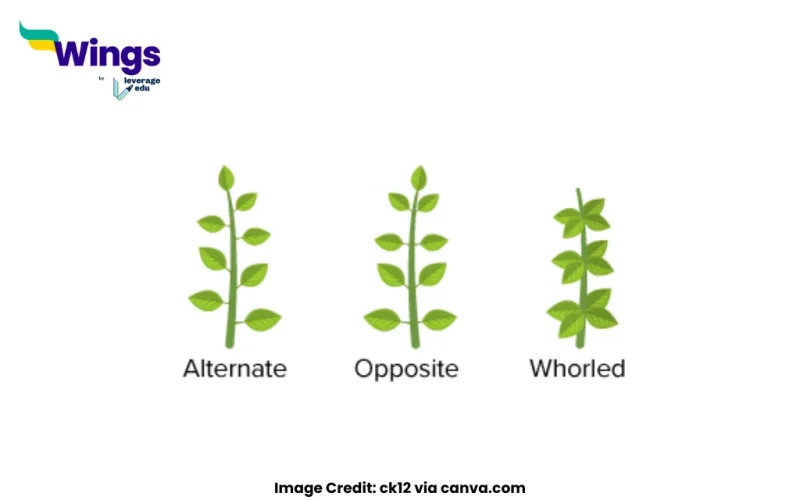Phyllotaxy refers to the arrangement of leaves on a stem or branch to maximise light capture for photosynthesis. Among the different types of phyllotaxy, alternate and whorled arrangements stand out due to their distinct patterns. The primary difference between alternate and whorled phyllotaxy is that in alternate phyllotaxy, a single leaf grows at each node in an alternating manner, whereas in whorled phyllotaxy, three or more leaves grow in a circular arrangement at a single node.
What is Alternate Phyllotaxy?
Alternate phyllotaxy is the most common leaf arrangement in plants. In this type, each node bears only one leaf, and successive leaves grow in a spiral or zigzag pattern along the stem. This arrangement ensures that the leaves receive maximum sunlight with minimal overlap.
Examples of Alternate Phyllotaxy
- Sunflower (Helianthus annuus)
- Mustard (Brassica spp.)
- China rose (Hibiscus rosa-sinensis)
Advantages of Alternate Phyllotaxy
- Reduces competition for sunlight among leaves
- Promotes efficient photosynthesis
- Helps in better air circulation, reducing fungal infections
What is Whorled Phyllotaxy?
Whorled phyllotaxy is characterised by three or more leaves growing from a single node, forming a circular or whorled pattern around the stem. This arrangement is common in plants that require strong structural support and maximum exposure to light from all directions.
Examples of Whorled Phyllotaxy
- Alstonia (Alstonia scholaris)
- Nerium (Nerium oleander)
- Elodea (Elodea canadensis)
Advantages of Whorled Phyllotaxy
- Allows equal distribution of leaves around the stem
- Provides structural balance and strength
- Maximises light capture in bushy plants
Comparison Between Alternate and Whorled Phyllotaxy
| Feature | Alternate Phyllotaxy | Whorled Phyllotaxy |
| Leaf arrangement | One leaf per node | Three or more leaves per node |
| Common in | Herbs and small plants | Shrubs and aquatic plants |
| Example plants | Sunflower, Mustard | Alstonia, Nerium |
| Advantage | Reduces shading, enhances photosynthesis | Ensures light distribution from all sides |
Both alternate and whorled phyllotaxy play essential roles in plant growth and adaptation. While alternate phyllotaxy helps plants optimise sunlight exposure with minimal shading, whorled phyllotaxy enhances structural balance and maximises light absorption. Understanding these leaf arrangements helps in studying plant morphology and their adaptive strategies in different environments.
Common Doubts
 60,000+ students trusted us with their dreams. Take the first step today!
60,000+ students trusted us with their dreams. Take the first step today!


 One app for all your study abroad needs
One app for all your study abroad needs










